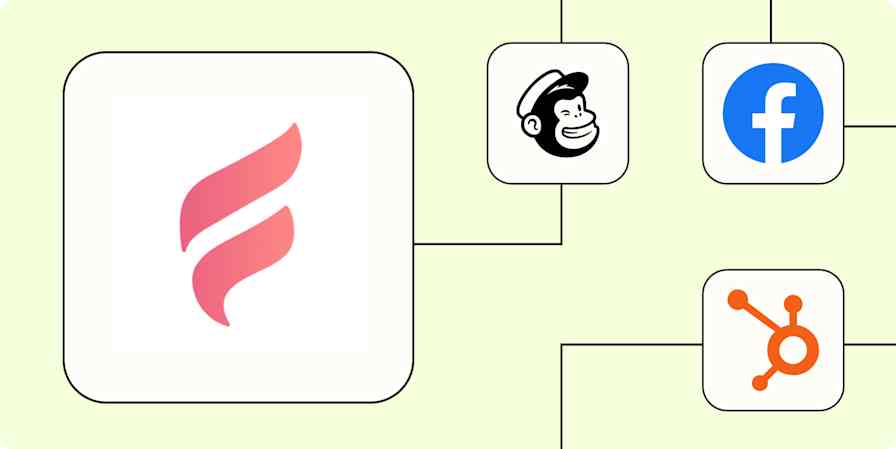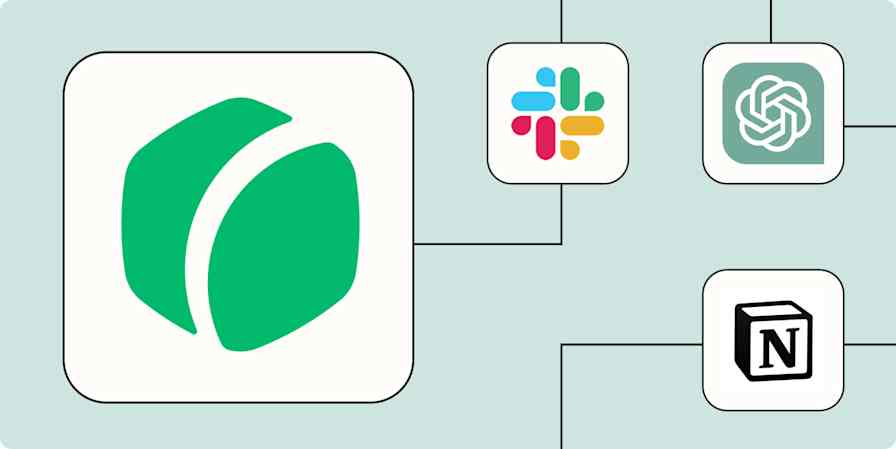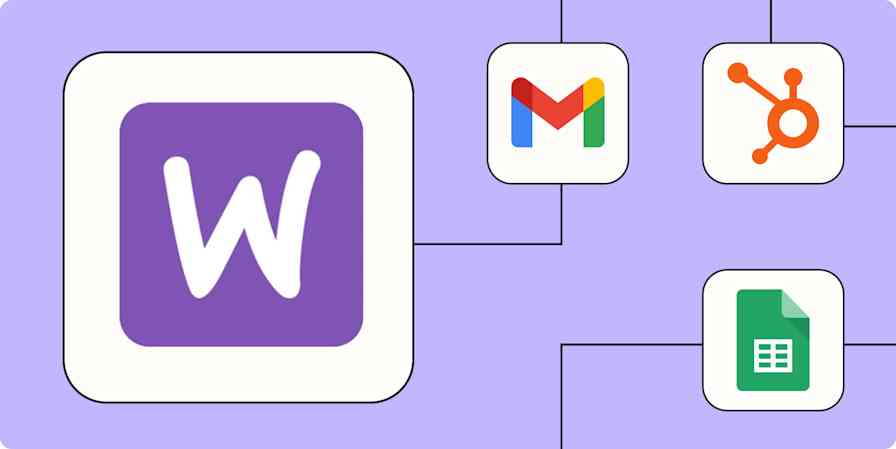Distributed teams are now a growing reality for many businesses. And for good reason! According to one study, 77% of remote workers say they feel more productive when working at home, while another found that 85% of managers believe having teams with remote workers will soon become the new norm.
But distributed teams also present new obstacles: According to a report from Buffer, the three biggest challenges associated with remote work are unplugging after work (27%), loneliness (16%), and communication/collaboration across teams (16%).
Even if you're not currently working with distributed teams today, there are two compelling arguments to support investing in remote infrastructure. First, you want to future-proof your business, so you're ready for the next disruption. Second, the benefits of doing so will also help your current productivity, thanks to the business automation opportunities it enables.
As the CEO of Grow with Jen, I help clients across different industries build cross-platform business process automation. I like to think of my work as reducing human capital expenses while enhancing productivity—but not at the expense of human experience.
Today, I want to share some of the tools and strategies I've implemented to make that possible. By harnessing the power of Zapier, you can elegantly orchestrate your team's movements while creating a data-rich environment for the entire organization. This infrastructure can also be used to automate business processes regardless of where your employees work.
This post was developed from a session given by Jen Rudd at ZapConnect 2022, Zapier's annual user conference. Watch the full session in the video below.
Your starter pack tech stack
Let's start with fundamentals. Here are a handful of tools to kickstart your business process automation journey. Keep in mind that other SaaS and enterprise tools may be better suited for your business. This isn't an end-all-be-all list, but it will get you started.
Airtable
Airtable is a data-rich environment to track and transform data. It's easy to get overwhelmed when you have a lot of data in one place, so structuring that data and only showing your team what's important to them is ideal. Airtable lets you customize interfaces for data visualization to help various stakeholders get the information they need in different formats.
Learn more: How to automate Airtable
Google Workspace
Google Workspace provides a centralized data processing hub with email, calendar, and other digital tools to help your organization run efficiently. It's all cloud-based which makes it easy to store, share, and silo information across your teams.
Slack
Slack is a messaging platform that creates an inclusive environment for teams. It allows for synchronous and asynchronous communication—which is ideal for working across time zones and respecting when team members are "off the clock." And when new information comes into your Slack, you can set notifications at the personnel, team, or enterprise level.
Learn more: The best automations for Slack users
Zoom
Zoom is a video meeting platform that allows team members to collaborate "face to face," regardless of whether they're in the next room or across the globe. It offers a chance for personal connection because team members can engage with one another in real-time—no matter where they're located.
Learn more: 6 ways to automate Zoom
Zapier
Zapier is the glue that helps all these tools work together to reduce context switching, automate workflows, and reduce the time humans need to manage their workflows. For example, with Zapier, you can seamlessly send information from your CRM to clients (through Gmail) and to staff (through Slack) without jumping back and forth between applications.
New to Zapier? It's workflow automation software that lets you focus on what matters. Combine user interfaces, data tables, and logic with thousands of apps to build and automate anything you can imagine. Sign up for free to use this app, and thousands more, with Zapier.
A word of caution: I tend to avoid "all-in-one" solutions. Even if you have an industry-specific tool that works well for your business, it probably only covers 80% of your needs. So you'll need to find other solutions to cover that last 20%. This is where Zapier is valuable: In these situations, it can connect all your tools to reduce latency and improve client and team experiences.
Now that we've covered the toolkit, it's time to orchestrate!
Connect the dots in your CRM
One of the major ways I like to weave these tools together is by simplifying the onboarding process for new clients. When you have a new client, you want to welcome them in a way that sets everyone up for success. This means you need to get them the information they need when and where they need it.
To get started with a Zap template—what we call our pre-made workflows—just click on the button. It only takes a few minutes to set up. You can read more about setting up Zaps here.
Add clients to your project management base
When a client signs a contract, you want to add them to your project management base, like Airtable, immediately. Using Zapier, you can automatically add clients to Airtable after they've signed their paperwork instead of having a team member transfer the information manually.
Create Airtable records from newly completed DocuSign envelopes
Create project briefs in Google Docs and link to Airtable
With Zapier, you can take the information you've already collected from a client in Airtable and generate a brief that the key players in the project can further develop. This might look like a "skeleton document" initially, but by connecting the brief to Google Docs, your team can further collaborate on the document, no matter their location. All the while, the brief will stay updated in Airtable without having to move back and forth between applications.
Create Google Docs from templates for new Airtable records in views
Send welcome emails with Gmail
Clients like to have instant gratification. If your client signs a contract at 3 p.m. their time but it's midnight for the team member who typically onboards clients, you can trigger an automated welcome email instead of waiting eight hours for their next contact. Plus, that team member doesn't have to stress about missing an email in the middle of the night because this basic admin is off their desk.
Send emails from Gmail when new DocuSign envelopes are sent or completed
Include Zoom links in new meetings
When you create a client meeting in Google Calendar, you can simply set the meeting location to Zoom Video. Zapier will pull the meeting link into the Calendar invite, so you don't have to go into other software to extract that information. At the time of the meeting, just return to your calendar, click the location button and join the Zoom meeting.
Add new Zoom meeting links to Google Calendar events
Send alerts for status changes
When you have a status change in Airtable, you can automatically trigger emails to the client, letting them know the milestone you've hit and your next steps. This way, your team member doesn't have to update the status in Airtable and then log into Gmail to write to the client.
Send emails via Gmail for updated Airtable records
Automate team management and communication
But connecting these tools isn't only to enhance your CRM. You can significantly improve team management and communication processes as well. Here are a couple of ideas:
Add project collaborators immediately in Airtable
If you have your Airtable set up in a way where you can post attributes to clients, you can automatically assign staff based on that data. For example, you may determine that if a client has booked one type of product, they need to work with team members A, B, and C. With Zapier, you can establish this rule and automatically assign staff without having a manager go in to look over the workflow manually.
Update statuses with channel automation
Like automated emails for your clients, you can automate Slack notifications to team members when a status changes in Airtable. Not only is this handy for remote teams working in different time zones, but it also makes it easier for project managers living in their Airtable dashboards all day while their teams communicate in Slack.
Send Slack notifications for new or updated records in Airtable
Implementation best practices
A word of caution: If you can't do it manually, you have no business automating it.
Sometimes I run into a client who says, "I want to automate everything in my business."
That's a great attitude, but it will be challenging to get anything automated if you don't really know your current workflows. And this approach can have unintended consequences. Trying to automate every touchpoint in a project and never having human intervention may make the client feel isolated. They may notice if you're over or under-notifying them and feel dejected by so much computer interaction. You can also overwhelm clients and teams if you've automated things they haven't expected.
This is why a few key implementation strategies can go a long way:
1. Standardize your processes
Take the time to write out and standardize your workflows. Whether you use flow charts or bullet points, you need to understand the path of data and how it will transform throughout a project timeline. If everything is gut feeling, it will be tough to automate. So make sure you're documenting processes ahead of time because if a human can't understand them, a computer certainly won't.
2. Consider user stories
Meet with your users and understand their needs. How do your distributed teams want to interact with information? Some may want to use Slack, while others may prefer Gmail. Where does your crew want to be, what data do they want, and how can your infrastructure connect the dots efficiently?
3. Use the functionality of Zapier
Even with high-touch businesses, you can still automate using Zapier. Paths allow you to customize client engagement, while Zapier's built-in Formatter tool will enable you to transform data into more "human readable" forms. For example: instead of reading "10/21/2022 8:00 AM EST," you can print, "Friday, October 21st at 8:00 AM, your time zone." This can remind folks that there's a human behind the automation.
4. Remember, you can't automate everything
But you should automate whatever doesn't require a human touch! Automating here allows you to free your distributed teams up for more thoughtful interactions down the line. Ask yourself: Where can I make my team shine? How do I leverage automation to make the most significant impact on their time and my business?
Read more: When you should automate a task
It will take time to put this infrastructure in place but investing the time now will pay dividends in the future. Distributed teams are here to stay. With the right tech stack, you can not only tackle some of the challenges associated with remote work—work/life balance, isolation, team communication—but you can also transform your business. Happy automating!










